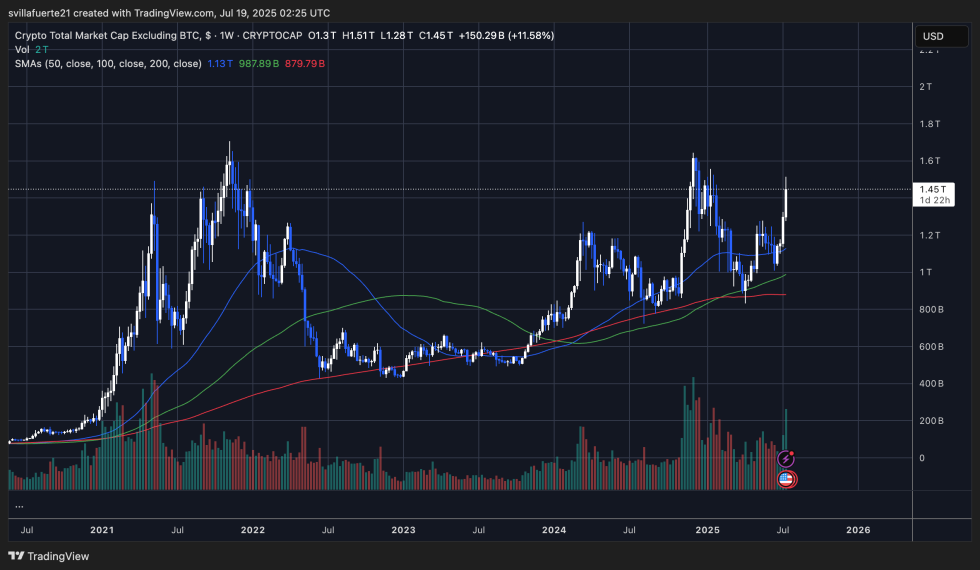Crypto Lawyer Reveals How the GENIUS Act Could Supercharge DeFi’s Next Growth Phase
DeFi's regulatory breakthrough moment? A crypto legal expert breaks down why Washington's new GENIUS Act might be the Trojan horse decentralized finance needs.
The regulatory dam is cracking
For years, DeFi projects operated in legal gray areas—now the GENIUS Act could provide the first legitimate on-ramp for institutional capital. The legislation cleverly sidesteps the SEC's usual chokeholds by redefining what constitutes a 'financial platform' in the Web3 era.
Wall Street's worst nightmare
Traditional finance execs are sweating as the bill's provisions could let DeFi protocols bypass their rent-seeking middlemen entirely. Imagine yield-bearing smart contracts cutting out the 2-and-20 hedge fund leeches—no wonder banks are lobbying against it.
The legislation doesn't solve all of DeFi's regulatory headaches, but it's the first serious attempt to create rules for a space that's been growing like wildfire. Whether this becomes crypto's Magna Carta or just another bureaucratic speed bump depends on the final wording—and how fast lobbyists can water it down.
DeFi Stands To Benefit As GENIUS Act Unlocks On-Chain Growth
Jake Chervinsky, Chief Legal Officer at Variant Fund, a prominent crypto-focused venture capital firm, recently offered an insightful take on the implications of the GENIUS Act. While the legislation itself is not aimed at decentralized finance (DeFi), Chervinsky noted that its impact on DeFi could be substantial. “The GENIUS Act isn’t directly about DeFi — it regulates centralized stablecoins with full reserves off-chain,” he said. “But it is very good for DeFi — the more dollars and people there are onchain, the more need there will be for on-chain finance of all kinds.”
This perspective highlights a broader trend: regulation that encourages safer, more transparent stablecoins could lead to an influx of capital and users into the crypto ecosystem. With more regulated digital dollars flowing on-chain, the infrastructure supporting lending, trading, and yield generation in DeFi stands to grow significantly.
Chervinsky’s point about payments being “just a gateway” reinforces the idea that once users begin transacting on-chain with stablecoins, the leap into more advanced financial tools becomes much more natural. As Bitcoin hovers above $117,000 and ethereum reclaims the $3,500 level, these legal developments are adding fuel to an already bullish environment. The coming weeks may prove decisive as both BTC and ETH test new levels, backed by increasing institutional interest and a favorable policy shift in Washington.
Crypto Market Surges To Multi-Year Resistance
The total crypto market cap excluding Bitcoin (TOTAL2) has broken out sharply, climbing to $1.45 trillion on strong volume. This marks an 11.58% gain in the past week and brings the market to levels not seen since early 2024. The move confirms renewed interest in altcoins, particularly Ethereum, which has led the charge with a 131% rally since April.

Price action on the weekly chart shows a clean break above the 50-week and 100-week moving averages ($1.13T and $987B), with bullish momentum accelerating. The 200-week moving average at $879 billion provided strong long-term support throughout the recent consolidation phase, setting the stage for this breakout.
This rally now targets the next major resistance zone around the $1.6–$1.7 trillion mark, where the market last peaked before a sharp correction. Volume has surged, supporting the strength of the breakout and suggesting institutional inflows may be returning.
If TOTAL2 can maintain this momentum, the altcoin market could see a broader rotation and rally. Still, investors should watch closely for potential profit-taking or retracements, especially near key resistance. A weekly close above $1.5 trillion WOULD further solidify the bullish structure and open the door for new cycle highs across major altcoins.
Featured image from Dall-E, chart from TradingView

